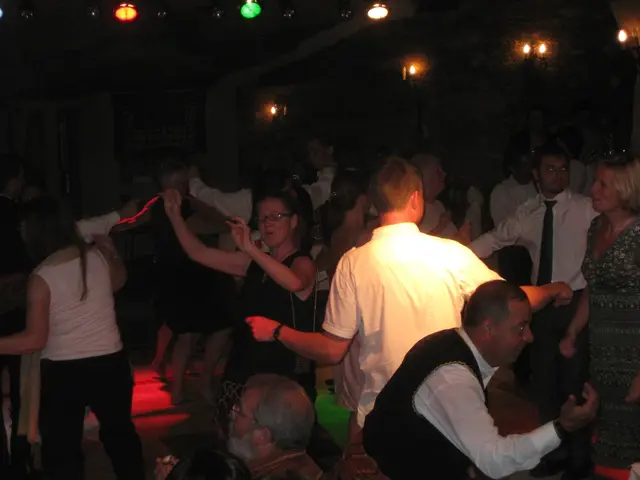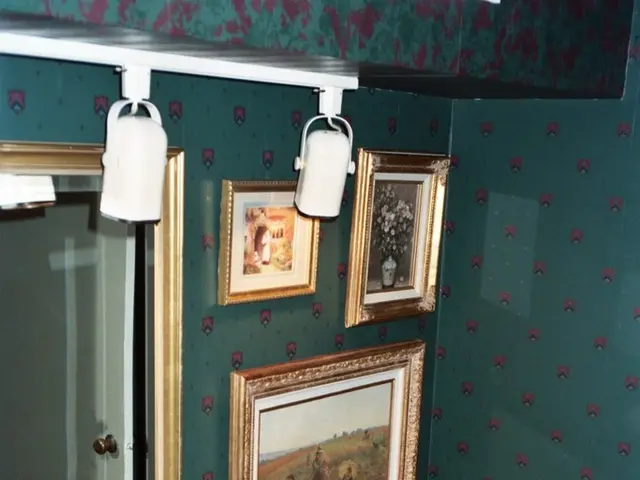Solar clock mantle repair encounters minor setbacks, specifically a few along the way
In the heart of a clock enthusiast's workshop, a small but intricate German time and strike mantel clock, sold under the Solar name in Canada, is undergoing a meticulous restoration process. This clock, with its dark walnut case and a 6-inch dial, boasts a Type 141 German movement from Hermle, known for its reliability and precision.
The first step in the restoration process involves replacing a brass washer on the clock's movement. This component, essential for smooth operation, can be replaced without the complexity of fabricating a friction washer with a mini-lathe. Instead, the owner carefully measures the dimensions of the old washer and sources a matching brass washer or shim at a hardware store or specialty clock parts supplier. If an exact match is not available, alternatives such as stacking multiple thinner washers or manually cutting a thin brass shim can be used.
During the reassembly process, it is crucial to ensure the warning wheel pin is in the roughly 12 o'clock position to permit a half-turn for the strike. This positioning is vital to prevent stalling. Similarly, the gathering pallet pin should be well clear of the rack teeth during reassembly.
The testing phase of the restoration process can last a couple of weeks or more. During this time, the owner takes the opportunity to clean the case and touch up small chips on the decorator piece under the dial. The movement of the clock, fortunately, does not have plated pivots, a common issue in Hermle movements from the 1970s to the late 1980s.
Two bushings were required during the restoration process. One, with an inside diameter of 2.5mm, provided a good fit for the arbour, while the other was large enough to cover the tension spring underneath. Notably, unlike many other German clocks, this one does not have a pin through the arbour that can be easily removed.
The clock's half-hour strike on a bell is loud enough to be heard across the house, a testament to its robust construction. The movement, still being produced by Hermle today, features a recoil escapement and a 11cm pendulum (200.8 beats per minute).
This restoration project is a testament to the enduring quality of Hermle clocks and the satisfaction that comes from bringing a vintage timepiece back to life. Whether you're a seasoned clockmaker or a curious hobbyist, the process of restoring a clock like this one can be both challenging and rewarding.
[1] Specialty clock washers or bushings available from clock parts suppliers [3] Exact part matches for your model may be found on Hermle parts suppliers or clock repair forums.
- The restoration process of vintage clocks like this Solar one often involves seeking specialty clock washers or bushings from clock parts suppliers, ensuring a smooth operation during the clock's functioning.
- For those interested in lifestyle, home-and-garden enthusiasts particularly, restoring a vintage clock offers a fusion of fashion-and-beauty with gadgets, showcasing the artistry and technology of such timepieces.
- In the realm of technology, replacement components for vintage clocks can sometimes be found on Hermle parts suppliers or even clock repair forums, making the restoration process a little less daunting for hobbyists and enthusiasts alike.




